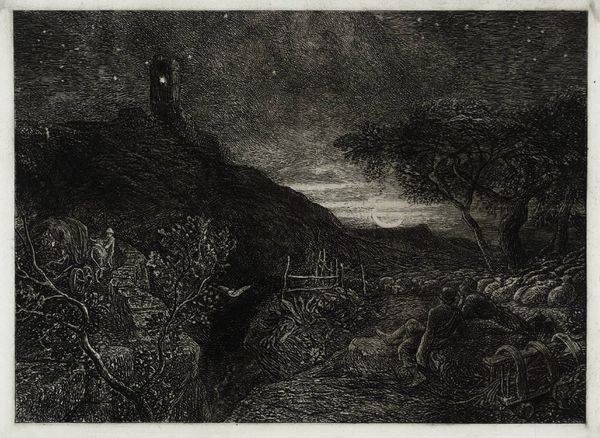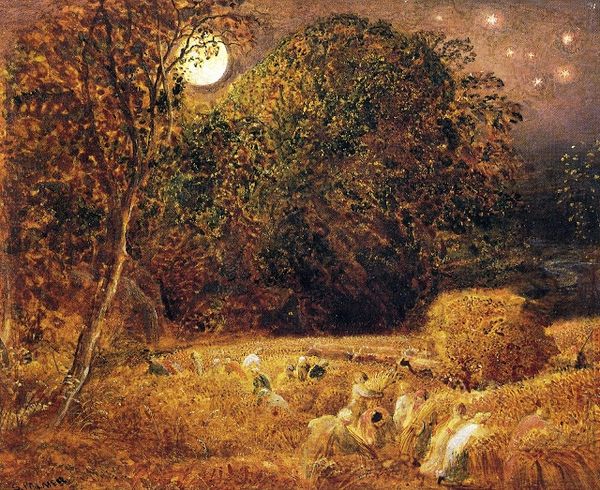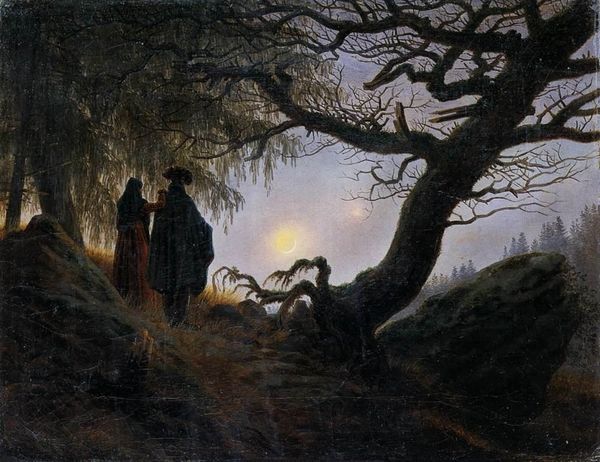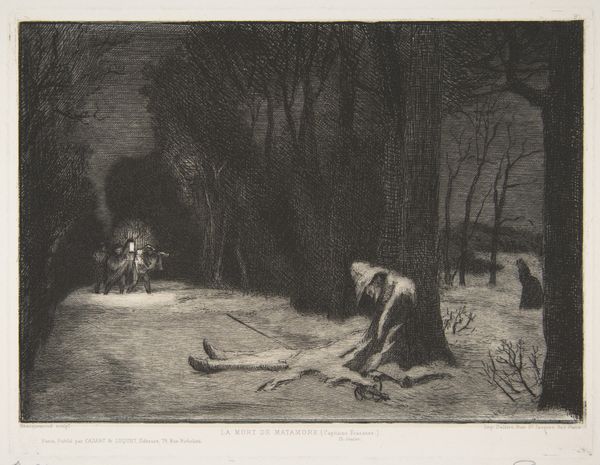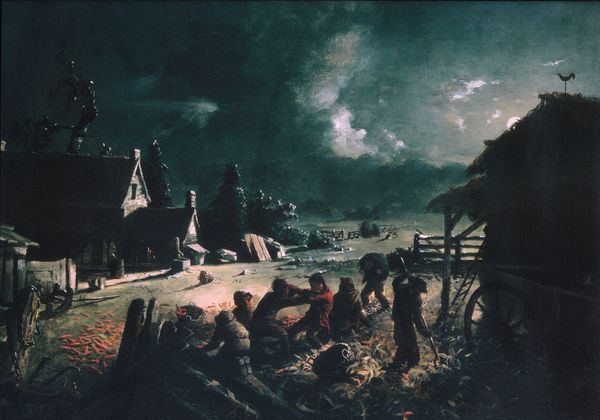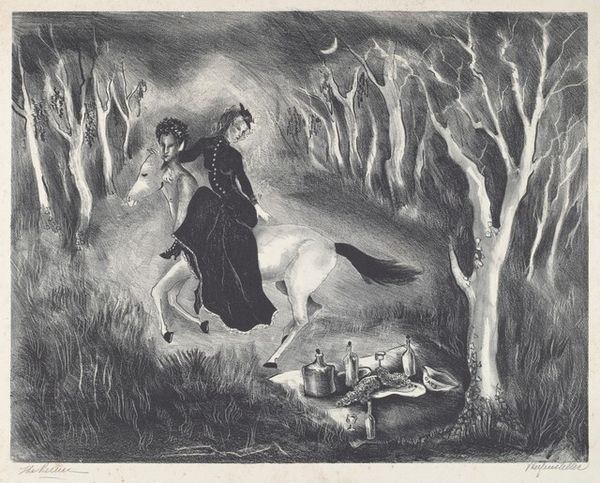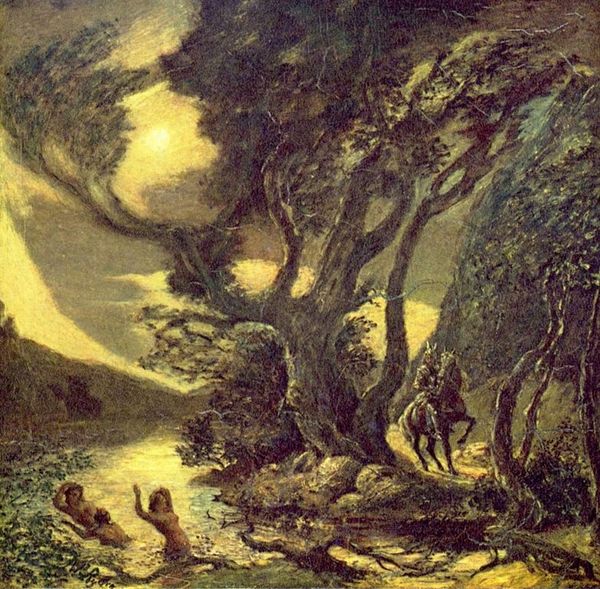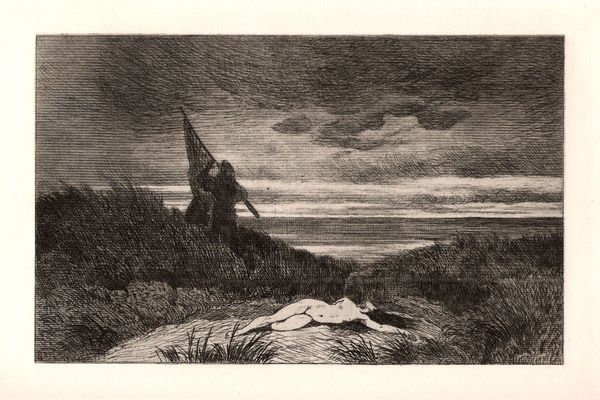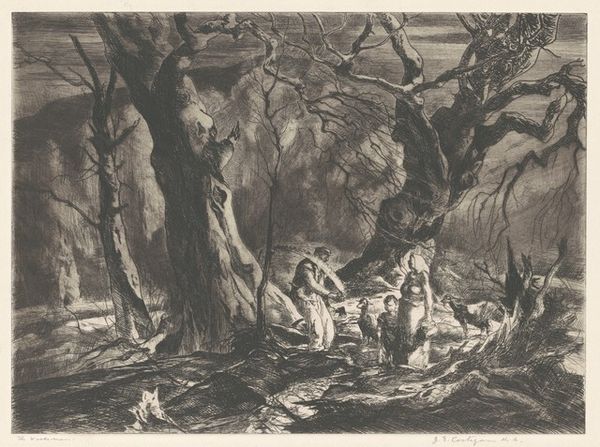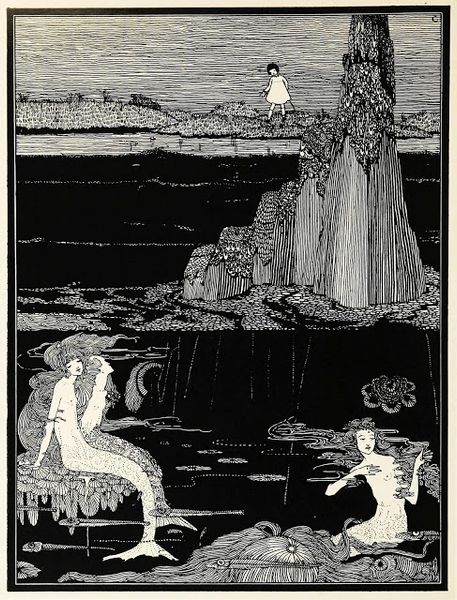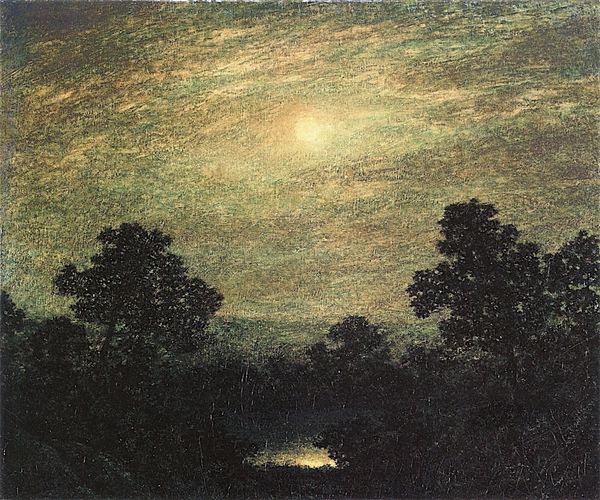
painting
#
narrative-art
#
painting
#
landscape
#
symbolism
Copyright: Public domain
Hermann Hendrich painted "Will-o'-the-wisp Dance" during a time when folklore and nationalism were deeply intertwined in European art. Hendrich, part of the late 19th-century German artistic milieu, tapped into the era’s fascination with local legends and the mystic allure of nature, particularly its darker, untamed aspects. Here, the will-o'-the-wisps, spectral lights believed to lure travelers to their doom, are brought to life. Consider how this depiction contrasts with the traditional roles assigned to women, often cast as either virtuous or dangerous temptresses. Hendrich's will-o'-the-wisps, ethereal and ambiguously gendered, challenge these simplistic binaries. "I seek to capture the unseen forces of nature," Hendrich once said, "the spirits that dwell in the forest and dance in the moonlight." The painting’s eerie beauty evokes both a sense of wonder and a disquieting premonition. It reflects a society grappling with industrialization and modernity, seeking refuge in the romanticized past and the mysteries of the natural world.
Comments
No comments
Be the first to comment and join the conversation on the ultimate creative platform.

